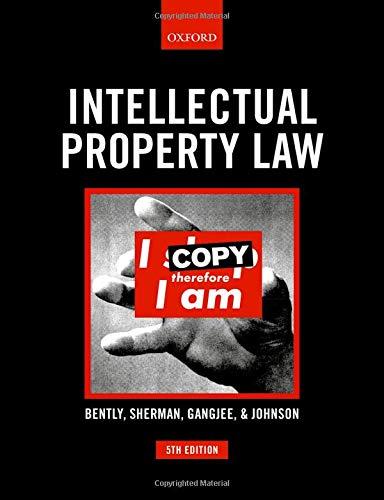Question
Rogers owns the house at 50 Albert Street, which he decides to sell, and accordingly lists it in the spring of 2018 for $130,000.The property
Rogers owns the house at 50 Albert Street, which he decides to sell, and accordingly lists it in the spring of 2018 for $130,000.The property is bounded by two driveways servicing two properties, i.e 52 Albert Street on the right, and 48 Albert Street on the left. The property on the left had a right of way agreement permitting its owners to use the left hand driveway for certain limited purposes, which is covered by a ROW ( right of way)agreement. Bell, who is a first-time home buyer has been scouting for properties, happens to come across this property. He engages you, a newly licensed Real Estate Agent, to arrange a viewing.
You facilitate a viewing of the property on Oct 19, 2018 at about 11 am. Rogers shows you and Bell around, and explains that the driveway was subject to an easement in favor of the owners/ occupants of 48 Albert Street. Soon thereafter, Rogers faxes you the Property Condition Disclosure Statement (PCDS) and a plot plan for 50 Albert Street, but not the ROW agreement. While the PCDS indicates the granting of an easement in favor of 48 Albert Street, the Plot plan does not show the existence ofany encroachments by 48 Albert Street, although it indicated a driveway encroachment by 50 Albert onto 52 Albert Street. You share these with Bell on the 20th of Oct, who indicates that he would like to make an offer, which is then communicated to Rogers on the 21st at 10 a.m, the offer to be open until 4 p.m that very day.
Rogers responds to this, faxing your office a counter-offer dated 22nd October, which is to remain open until 9.00 p.m. that day. Attached to it was a copy of the ROW agreement that Rogers has retrieved from his lawyer. You share this information over the phone with Bell, who accepts the Counteroffer on the same day. At this point, neither you nor Bell has scrutinized the ROW, which details the easementary right as also granting the right to park cars on the driveway, and along the sidewalk in front of 50 Albert Street, and an additional covenant not to plant trees bordering the driveway. Two days later, Bell goes through the ROW and is alarmed at the extent of the easements granted and the negative covenant. Further scrutiny of the property and its neighborhood reveals that the neighbouring property is occupied by students who usually have parties over the weekend, with the likelihood of cars being parked all over the place. Bell now has second thoughts about this deal and wishes to get out of it. You are eager to please your client and assure him that you will take care of this.
You consult with the broker, who advises you to fax a notice of termination to Rogers, citing the easement as a reason. Accordingly, you fax Rogers the notice. Meanwhile, Rogers has, as conveyed to you earlier, left on vacation, expecting to be back in a month. Relying on your assurance to take care of the situation, Bell puts in an offer on another property. A month later, Rogers returns to find the Notice of Termination and is adamant that he will not release Bell from the deal. Rogers has now filed a suit for breach of contract against Bell, who also faces the possibility of being sued by the owner of the second property if he fails to go ahead with that deal. Additionally, Bell is seeking to hold you responsible for his losses.
Please answer the following questions
( In developing your answers to questions 1 and 2, you may make necessary assumptions to base your reasoning; i.e if any ancillary fact is vital to making a conclusion, you may make an assumption that a party acted or failed to act in a required way, so as to develop your rationale/ conclusion; as an eg. if you wanted to discuss the relevance of a 'condition precedent' clause, you may assume either that there was or was no clause relating to it in the Agreement, in developing your conclusions. )
- a. Speculate on how the courts would interpret the mutual rights and obligations of the parties, i.e Rogers and Bell. What are potential reliefs Rogers would seek for breach of contract, and what would be the basis of his claim. Would Rogers succeed in his suit. Why or why not?
b. Explain what are normal considerations for rescinding a contract, and whether they apply in this case.Can Bell rescind the contract; if yes, why, if no, why not? Discuss what are usual grounds to rescind a contract, and whether they apply to this case
c. Examine whethera valid contract has been formed, and at what point (actual date and when) was it formed
e. Has either party been negligent? Discuss implications ( from a tort standpoint)to the outcome of the case.
Step by Step Solution
There are 3 Steps involved in it
Step: 1

Get Instant Access to Expert-Tailored Solutions
See step-by-step solutions with expert insights and AI powered tools for academic success
Step: 2

Step: 3

Ace Your Homework with AI
Get the answers you need in no time with our AI-driven, step-by-step assistance
Get Started


